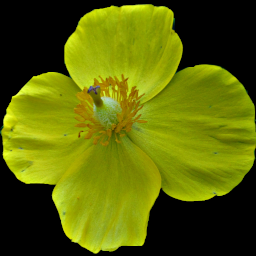
UPDATE: In an earlier version of this article, we identified this plant as Spotted Cowbane (Cicuta maculata). Thanks to a question from a kind reader (see the comments below) we looked harder, and concluded that we were mistaken.
This attractive plant came to us as a garden perennial, but has made itself so much at home that it is becoming a pest in some areas. Its spreading habit makes it a useful ground cover, but it is almost impossible to eradicate if it gets into a plot where it’s not welcome, because, when it is pulled up or dug out, a new plant will sprout from the tiniest bit of rhizome left in the soil. Many garden forms have variegated leaves, but those forms may bear seeds that will grow into ordinary green-leaved Goutweed. These plants were growing in some mushy ground beside a stream in Frick Park, where they were blooming in the middle of May.
We had earlier identified this as Spotted Cowbane (Cicuta maculata), but a kind correspondent who asked how to tell the difference between the two plants made us examine the identification again. They are indeed very similar, but here are the differences we found persuasive:
Spotted Cowbane has purplish stems or stems “streaked with purple”; Goutweed has green stems.
The stalks of Spotted Cowbane are fatter than the stalks of Goutweed.
The flower clusters or “compound umbels” of Spotted Cowbane are more numerous and sloppier (“pedicels very unequal”) than the compound umbels of Goutweed.
Gray describes the genus and the species:
AEGOPÔDIUM L. GOUTWEED. Fruit ovate, glabrous, with equal filiform ribs, and no oil-tubes; stylopodium conical and prominent; seed nearly terete. — A coarse glabrous perennial, with creeping rootetock, sharply toothed ovate leaflets, and rather large naked umbels of white flowers. (Name from aix, goat, and podion, a little foot, probably from the shape of the leaflets.)
A. podagrària L. —Waste-heaps, etc., e. Mass. to Del. (Adv. from Eu.) [It has since spread further, mostly by escaping from gardens.]
[For comparison, here is Gray’s description of Cicuta maculata:
CICÙTA L. WATER HEMLOCK. Calyx-teeth prominent. Fruit ovoid to nearly orbicular, glabrous, with strong flattish corky ribs (the lateral largest); oil-tubes conspicuous, solitary: stylopodium depressed; seed nearly terete. — Very poisonous plants, with pinnately compound leaves and serrate leaflets, involucre usually none, involucels of several slender bractlete, and white flowers. (The ancient Latin name of the Hemlock.)
C. maculàta L. (Spotted Cowbane, Musquash Root, Beaver Poison.) Stem stout, 1-2.2 m. high, streaked with purple; leaves 2-3-pinnate, the lower on long petioles; leaflets lanceolate to oblong-lanceolate, 3-12 cm. long, acuminate; pedicels in the umbellets numerous, very unequal; fruit broadly ovate to oval, 3-3.5 mm. long, shallowly or not at all grooved at the commissure.— N. B. to Va., and westw., common.]





